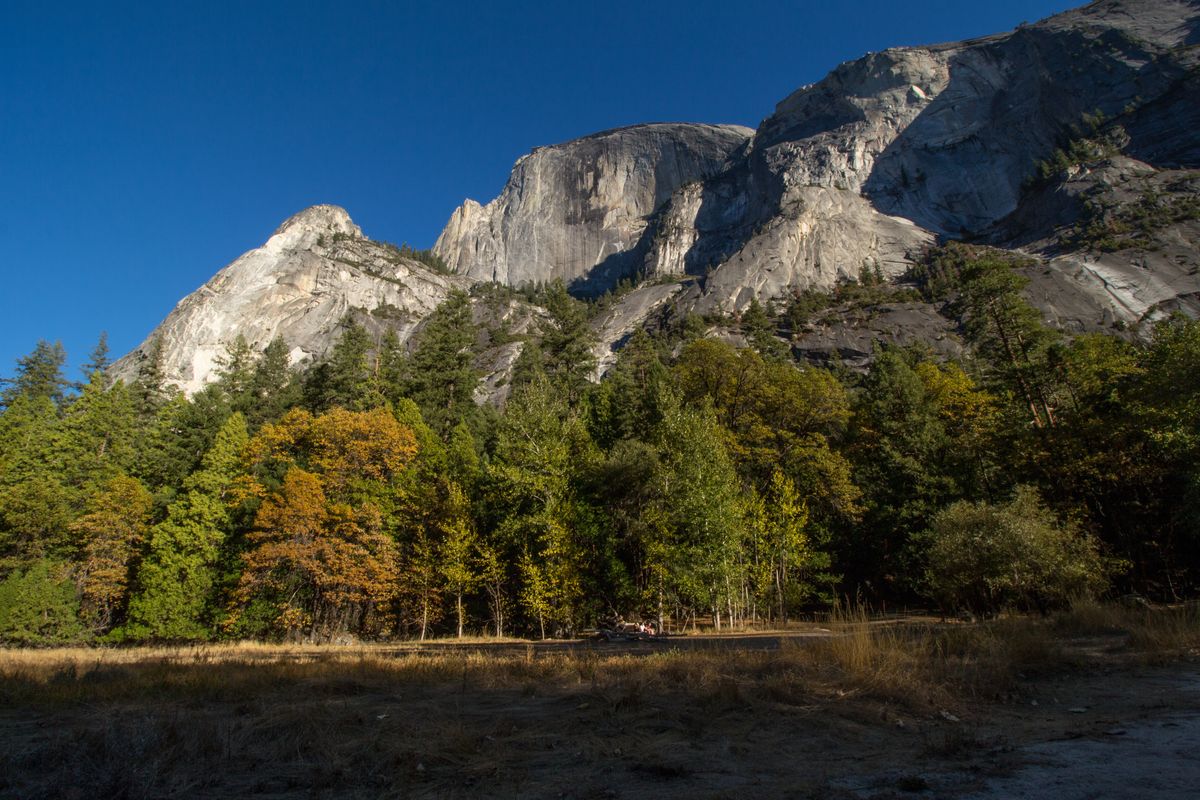Autumn is one of the best times to visit just about any national park in the system.
With the summer over and the kids back to school, gone are the crowds of campers, families, and tourists. In their place, perhaps a dusty pattering of the first season's frost and an ever-growing layer of fall foliage.
The best things about autumn are the temperatures and the leaves. The summers are scorching nowadays, but the yielding temperatures of autumn make excursions more pleasant. Of course, the fall colors are spectacular, too. Maple, larch, and aspen across the country paint swathes of the forest foliage hues of gold and vermilion in their final act of life before the dead of winter.
Here, among other things, are the best places to find them.

Sleepers Out West
Yosemite National Park is beautiful throughout the year, and while the park is best in spring when the falls are peaking and the crowds are still warming themselves from the cold of winter, there are pockets of fall foliage if you know where to find them. The season is late, too—lasting into November in some areas. Look for dogwood, which line the highway from the south and northwest, maple, oak, cottonwood, and aspen at elevation.
North Cascades National Park has a surprisingly colorful fall display, especially when the larch and maple turn gold. Mid-October is prime for the deciduous conifer, a magnificent sight when set against the white granite of the area or the snowcapped peaks themselves.
Other favorite parks for stunning fall adventures:
Crater Lake National Park, OR (*beware of wildfires and smoke)
Mount Rainier National Park, WA (*beware of wildfires and smoke)
Lassen Volcanic National Park, CA

The Rocky Mountains
While the forests of Appalachia claim the crown when it comes to fall color, that doesn't mean the forests farther west lack colorful displays in September and October. Glacier National Park, Grand Teton National Park, and Rocky Mountain National Park are several of them, and these parks have an added bonus: The fall is the mating season for elk. Their haunting bugles pick up in mid-September and last through mid-October. The aspen, so prevalent throughout Colorado, start to turn in August at higher elevations, reaching their peak by late September, give or take a couple weeks.
Go here:
Lumpy Ridge
Bridal Veil Falls via Cow Creek Trail

Appalachia and the East Coast
The deciduous forests of the East Coast are older than those in the West, and they're composed of a much greater proportion of broadleaf trees than those forests of fir and pine you'll find west of the Mississippi. That means they're the best place on the continent to witness the spectacular change that happens as summer turns to winter. Great Smoky Mountains National Park, the Blue Ridge Parkway, and Shenandoah National Park are a few of the best. In the Smokies, a common misperception suggests the peak of the fall colors occurs in mid-October. The maple, oak, sweetgum, and hickory start to turn as early as mid-September above 4,000 feet in elevation, and the color slowly spreads to lower elevations, peaking between mid-October and November.
Acadia National Park is another amazing fall spectacle. The park is famous for its fall foliage, and one of the most popular for photographers. The maple, birch, oak, hemlock, and aspen begin their turn in mid-September. Maine even has an official fall foliage website to help you track the turn throughout the state.
Go here:
Foothills Parkway
Middle Prong Trail
Big Creek to Mouse Creek Falls





















